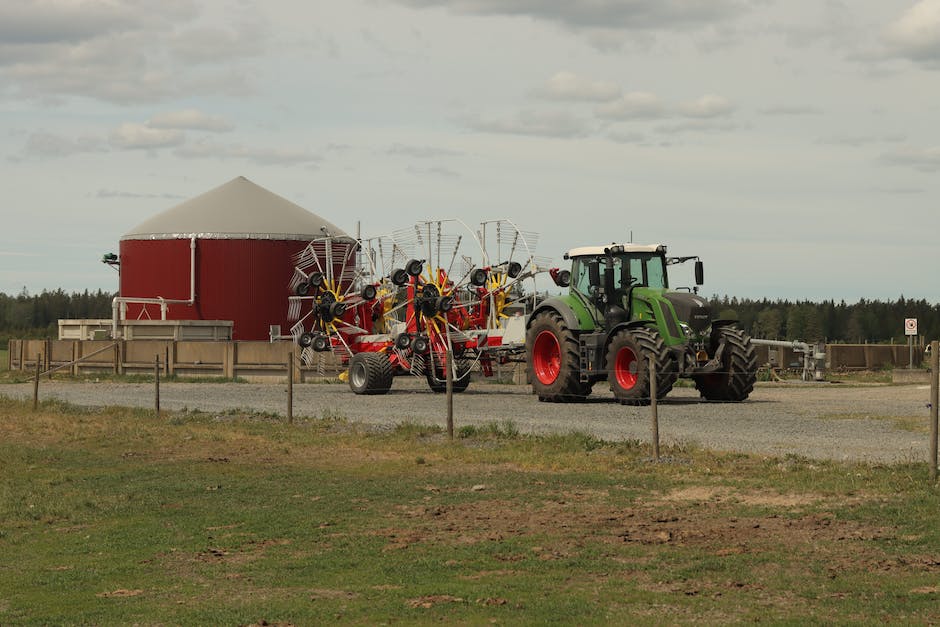Understanding Glyphosate Persistence in Soil

As one of the most commonly used herbicides worldwide, glyphosate’s interaction with our environment is of great importance and interest. Farmers, scientists, and concerned citizens alike have a vested interest in understanding its composition, function, and implications for both immediate application and long-term use. In delving into the understanding of glyphosate, considerations will be given to its basic biochemistry, factors affecting its ability to persist in soil and the possible ecological impact of this herbicide on soil microbiota and fertility. We will also look into the practical solutions currently being implemented and researched to combat its long-term persistence in soils.
Understanding Glyphosate
Unraveling Glyphosate: Unveiling its Character and Utility in Contemporary Agriculture
Glyphosate, a broad-spectrum, non-selective herbicide, has held an essential place in the agricultural playbook since its commercial introduction in 1974 by Monsanto under the trade name Roundup. It is undoubtedly, as empirical data suggests, one of the world’s most extensively used herbicides owning to its considerable efficiency in clearing extensive weed infestations and consistently promoting crop yield. It is worth understanding that glyphosate works its action by inhibiting the enzyme 5-enolpyruvylshikimate-3-phosphate synthase (EPSPS), which is vital for the production of essential amino acids in plants, thereby causing plant death.
Glyphosate’s popularity as an established tool in successful farming has risen due to the common farmer’s struggle against the wily and persistent opponent: weeds. These unsolicited guests compete primarily for nutrients, light, and water, causing detriment to the overall crop health and significantly reducing economic yield. Through its systemic methodology of action, glyphosate effectively inhibits weed proliferation by getting absorbed through the foliage and then transported throughout the plant, effectively curbing overall weed growth.
Furthermore, the advent of genetically modified (GM) crops has cemented glyphosate’s role in modern agriculture. Numerous crops, such as soybean, corn, cotton, and canola, have been engineered to be glyphosate-resistant. This genetic modification has allowed the broad-spectrum application of glyphosate in eliminating weeds while leaving the economically important crops unharmed. This approach has streamlined weed control, contributed to higher yield stability, and allowed for more flexible timing of herbicide application.
However, as is the case with any chemical compound employed at such an extensive scale, the use of glyphosate is not devoid of challenges. While its toxicity to mammals is relatively low, excessive and prolonged use of this herbicide has led to the evolution of glyphosate-resistant weeds, ushering an era of “superweeds” that significantly challenge agricultural productivity. Moreover, ongoing debates and studies regarding its potential long-term environmental impact and its implications on human health have led to timid responses and regulations in numerous countries.
As the dynamics of weed management continue to evolve in an era characterized by growing food demand and changing climate patterns, it becomes increasingly evident that glyphosate is poised to play a crucial role in meeting these challenges. Striking a balance between responsible and judicious use of glyphosate, comprehensive understanding of its effects on the environment and human health, and the continual technological advancements in weed management, could contribute to a more sustainable agricultural model. This balance underscores the concept that, while the tools within agriculture may change and adapt, the goal remains constant: the efficient and sustainable production of food. Scientific exploration and understanding, as always, remain at the heart of this endeavor.

Factors Affecting Glyphosate Persistence
Title: The Environmental Factors Influencing the Half-Life of Glyphosate: A Scientific Perspective
Unveiling the intricate patterns of interaction and interdependence between abiotic factors in an ecosystem such as soil composition, climate, and water resources, and the persistence of agrochemicals, sheds invaluable light on our understanding of environmental dynamics. One substance that merits heightened investigation is glyphosate, a widely used herbicide. How long this ubiquitous compound persists in the environment – its half-life – is an issue of paramount importance, underpinning the ongoing dialogue on best management practices for sustainable agriculture.
The half-life of glyphosate, suggested by the scientific literature, varies extensively from days to several months, primarily contingent upon the environment in which it is discharged. Several key environmental conditions instrumental in influencing this herbicide’s rate of degradation warrant thorough exploration — they include soil types and their characteristics, ambient temperature, and microorganism activity.
Understanding the basis of this correlation begins with the soil, a complex matrix of minerals, organic matter, and microscopic organisms, each playing distinct roles in glyphosate breakdown. Contrasts in soil properties, such as clay content, organic matter, and pH, can drastically affect the adsorption and degradation of glyphosate. Particularly, higher clay and organic matter content can facilitate glyphosate adsorption onto soil particles, delaying its degradation, hence prolonging its persistence in the environment.
Climate conditions, more specifically, temperature, are another critical determinant of glyphosate’s environmental half-life. Warmer temperatures generally tend to expedite glyphosate decomposition, positing that in tropical regions, the half-life may be significantly shorter than in temperate zones. This assumption theorizes glyphosate’s half-life to be remarkably season-dependent, with degradation rates likely to plummet during colder months.
Lastly, the activity of microorganisms, the silent catalysts driving nature’s complex web of functions, also plays a pivotal role in glyphosate’s degradation. Glyphosate is primarily decomposed by microbial activity — bacteria and fungi — in the soil. Areas high in microbial diversity clubbed with favorable growth conditions predispose a shorter glyphosate half-life as these microscopic organisms metabolize the compound.
It is paramount to note that these factors do not act in isolation but rather synergistically. The interaction between soil properties, temperatures, and microorganisms can create multiple scenarios impacting glyphosate’s longevity in Nature’s complex puzzle. For instance, microbial activity could also be influenced by temperature — a colder climate might hinder microbial metabolism and ultimately slow glyphosate breakdown despite a soil’s high capacity to potentially degrade this herbicide.
Unraveling the factors that influence glyphosate degradation not only enhances our understanding of its environmental persistence but also aids in shaping and adapting plant protection strategies, pesticide regulations, and, more importantly, our approach toward sustainable agriculture. As we continue to harness the power of science and technological innovation, let these insights inform our decisions for a balanced co-existence within the intricate web of life.

Possible Impact on Soil Microbiome and Ecosystem
Delving into the overarching consequences of the long-term presence of glyphosate in soil unveils several far-reaching implications. Even though glyphosate’s miraculous potential in weed control has reshaped agricultural landscapes worldwide, it’s essential to dissect the indirect influence it imparts on soil dynamics.
A preeminent concern resulting from extended glyphosate exposure lies in the alteration of soil biological activity. Predominantly, glyphosate can disrupt the microbial composition in the soil, leading to an ecological imbalance. Arguably, the most salient manifestation of this imbalance is a disruption in the soil’s nitrogen cycle. This alteration could potentially curtail the nitrogen available to plants, effectively curtailing their growth even in the absence of weed competition. Furthermore, since many soil microorganisms act as natural enemies to certain plant pathogens, their decline could inadvertently lead to an increase in plant disease incidence.
The decline in microbial activity also hampers the soil’s nutrient cycling ability, as microbes play an integral role in breaking down organic matter and releasing essential nutrients. Persistent glyphosate use could therefore lead to a long-term drop in the soil’s productivity, in some cases even necessitating the use of auxiliary fertilizers to replenish nutrient deficits.
Overlaying the biological alterations is glyphosate’s potential to interfere with the soil’s physical structure. Glyphosate has been shown to affect the stability of soil aggregates – the lumps of soil particles bound together by moist clay, organic matter, and microbial secretions. Glyphosate can degrade these, leading to a compaction of soil particles that reduces soil porosity, impedes root growth, and hinders water infiltration and drainage. This exacerbates soil erosion and runoff—highlighting a negative cycle where the continued application of glyphosate gradually debilitates the soil’s health and productivity.
Another ripple effect of the sustained presence of glyphosate is the potential chemical accumulation within the soil strata. Although glyphosate itself undergoes microbial degradation into aminomethylphosphonic acid (AMPA), prolonged application could result in the accumulation of this metabolite, which poses its own suite of ecological risks. The accumulation of glyphosate and AMPA may also have secondary effects such as changing the soil’s pH, which can influence nutrient availability and microbial activity.
In spite of these serious potential consequences, the use of glyphosate is not inherently detrimental, and an outright denouncement of its usage would dismiss its significant benefits to modern-day agriculture. Glyphosate’s impressive weed control efficacy underpins global food security and economic stability. Therefore, the focus should be on optimizing glyphosate use, advocating for responsible management strategies, and conducting rigorous research to elucidate lesser-known glyphosate-soil interactions.
In summation, the narrative of glyphosate and its long-term implication on soil health is complex and multifaceted. It bears the indelible impression of the hard reality of modern agriculture – a relentless tug of war between appearing discordant forces of productivity, environmental sustainability, and the relentless march of an ever-hungry human population. As conscientious scientists and stewards of the Earth, it is our collective responsibility to navigate this complex terrain and relentlessly strive to unearth new paths that align productivity with ecological integrity.

Dealing with Glyphosate Residues
Unveiling Methods to Mitigate Glyphosate Persistence in Soil
Glyphosate persistence in the soil has been identified as a considerable concern in scholarly discourse, further necessitating the exploration of viable methods to mitigate its longevity. These devised measures align with the broader objective of promoting sustainable agriculture and ensuring environmental integrity.
One cutting-edge approach involves the introduction of glyphosate-degrading microorganisms. The potential energy stored in this herbicide can entice specific microbes, thus incentivizing them to breakdown glyphosate. This bioremediation technique harnesses the role of microbes such as Pseudomonas and Bacillus species who possess remarkable glyphosate metabolizing capabilities. This interconnected biochemical process results in the conversion of glyphosate into aminomethylphosphonic acid (AMPA) and eventually into inorganic phosphate, carbon dioxide, and ammonium, thereby integrating glyphosate into the soil’s nutrient pool.
Another method of mitigation explores biochar’s use, a carbonaceous substance formed from the pyrolysis of organic material under low oxygen conditions. Biochar usage has been associated intimately with soil health improvement due to its ability to augment soil organic matter, increase cation exchange capacity, and improve soil water holding capabilities. Its highly porous structure and large surface area allow the adsorption of glyphosate, reducing its bioavailability in soil hence minimizing its potential non-target environmental impacts. The encapsulated glyphosate is then slowly degraded over time by soil microorganisms or further chemical reactions.
The employment of specific plant species, termed ‘phytoremediation,’ could provide yet another solution. Several plant species, such as Conyza Canadensis (horseweed), Parthenium hysterophorus (ragweed), and Amaranthus spinosus (thorny amaranth) have shown an ability to metabolize glyphosate out from the soil efficiently. These excluder plants restrict the accumulation of the herbicide, ultimately ensuring the integrity of succeeding plantations that might otherwise be affected by residual glyphosate.
Finally, legislative measures foster another form of glyphosate mitigation. Tailored policies and regulations can limit over-reliance and irresponsible usage of the herbicide, thereby reducing its cumulative amounts in the soil. Enhanced enforcement of such regulations, coupled with farmer education on the safe and judicious use of glyphosate-based herbicides, can contribute to its decline in the agrarian environment.
These strategies illuminate the dynamic balance between effective weed management, crop yields, and environmental and soil health. Enhancing efforts towards these mitigation strategies ensures the sustainable benefits of glyphosate, supports agricultural productivity, and outlines a forward path in the conscientious use of herbicides in agriculture. The periodic evaluation of these measures further refines our understanding of glyphosate-soil interactions, cultivates our sustainability endeavors, and echoes our commitment to global food security.

Our comprehensive exploration of glyphosate cuts across its complex biochemistry, the factors that influence its degradation and half-life, its impact on soil ecosystems, and the strategies employed in managing its residues in the soil. By appreciating these various elements, we attain a holistic view of both the challenges and possibilities that come with the use of glyphosate herbicide. Moreover, better understanding of this widely-used compound will ultimately contribute positively to its responsible use, the advancement of sustainable farming practices, and maintaining the delicate balance of our soil ecosystems.



